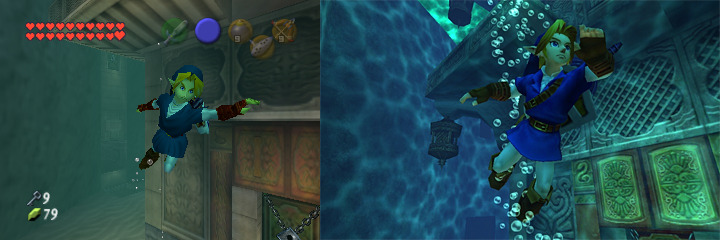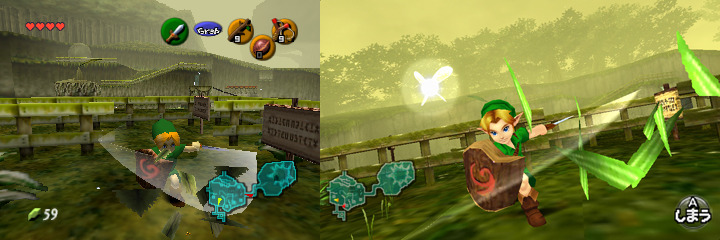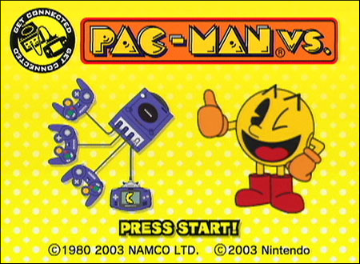I've just finished the main story in LA Noire. I'm not about to call it over just yet (probably wait for some of the DLC, and maybe redo some of the cases and see how it holds up). However, playing through the game, I now have an axe to grind:
The God Damn Fences.
In computer terms, specifically in
Human Computer Interaction (HCI),
affordance is usually defined how people interact with software/hardware, and the experience and expectation within that interaction. In games and interactive media, affordance would boil down to a much more simpler explanation: "Do things behave like how I expect them to". Notice I stayed away from saying "Do things behave like I expect in the real world": a game can be consistent with itself while still be completely abstract and away from reality. For example, in Gears of War, the commonly joked
"chest high walls" is an absolutely fantastic object: you can always attach to it for cover, it's always a solid cover that can't be shot through, and the game is littered with them that is always going to behave the same. This isn't an accurate portrayal of how the real world works, but players can rely on their knowledge that every piece of cover is always the same.
So why is affordance important? People like consistency, or more specifically, people like it when their world views are consistent. In the real world, gravity works exactly the same, everyday, and that's very comforting for everyday routines. You know that if you jump, you know exactly where you should land. Games are interesting because it allows for an entirely new/different wold view to be constructed without violating real life, and that becomes an interesting mechanic/puzzle for players to solve: Do Portal's portals make sense in real life? No, but the way velocity is conserved is consistent throughout the game that it makes sense. Do "chest high walls" make sense? Definitely not, but since everything in the world behaves with the same rules, then it's correct, within that game context.
So, what does this have to do with fences?
I'm using LA Noire as a recent and prime example, but this issue with visibility affordance applies to almost all open world sandbox games like GTA and
Saints Row. In fact, the only game I can think of that dodged this issue successfully is
Red Faction: Guerrilla (which I'll explain later on). Affordance in an open world sandbox game usually much simpler to define, but hard to replicate: Do what real life does. In all of these games, running into people, and you'll knock them down; hit them hard enough, and they'll ragdoll "realistically"; drive into a wall, and you'll crash (or worse, the car blows up) The problem then arises when something feels off: like driving into fences.
In LA Noire, there are certain sequences where you're taught to drive through gated fence. This is then carried over in other sequences where you have to chase suspects down. However, this "crash-able fence" is only on the gated ones, whereas others are completely solid, affordance halting your progress. Visually when driving, both types of fences look identical, hence, the affordance problem. This problem extends to other objects in the game too: benches, newspaper box are perfectly destructible, but fences that are even shorter than such objects in areas like parks aren't; some lightposts are destructible, unless they had a police phone attached to it, then it's not. The worst offender was during one sequence where the player is chasing the suspect, where they crash through a light post right next to a temporary metal tent: if you happen to drive slightly off and hit the tent, you crash. Visually the light post is 4-5 times thicker, and you know for a fact that a light post is bolted to the ground, and a temporary metal tent isn't. Other open world sandbox games like GTA and Saints Row suffers from similar issues too: trees that are indestructible, compared to street lights; bigger vehicles at higher speeds not translating to real momentum/cause bigger impact.
Why it happens? Laziness? Unwilling to work design around gameplay? Technical issues? These are all very possible causes, but the players won't care, because once it goes wrong, it will forever feel wrong for them. Instead of offering a solution (without knowing why it happens in other games), I point to Red Faction Guerrilla as a game that did it right and avoiding these affordance issues.
Red Faction's first key design key point that allows it to avoid affordance pitfalls was it's setting: by placing the setting on Mars, it allowed the physics to be different. This is important, as it allows all sorts of logical design changes, such as the way characters move around, how vehicles handle and react to physics and crashes, and even cosmetic things like how players are fenced and blocked off in the world. Players who look at games like LA Noire or GTA always ask: well why am I on this island/why do all the roads wrap into themselves. Having the game set on a distant planet, you can easily explain via the environment. The setting also lets them explain behaviours that players would find odd in other games: Floaty jumping? Low Gravity!
The other major design/tech factor that really helps sell the affordance in the world? Their destruction tech. Since everything "man made" is destroyable, it avoid the issue of wonky, unexplained physics that most other games suffer: get a bigger car would allow you to smash further into a building. It basically eliminates the "here's a tree/fence that cannot be smashed through" issue, replaced with "everything can be destroyed, just as long as you're fast enough". While it's not the most realistic model, it's ironically more familiar to everyone who understands how physics works in real life.
In the end, affordance isn't about realism. The casual observer may think that it is, and would say "just copy how things work in real life", but in reality, it's far more accurate to do what people "think" might happen than to do what is real. What is perceived as real is far more accurate and convincing than any simulation, and game designers should understand and work with this in all their games.







